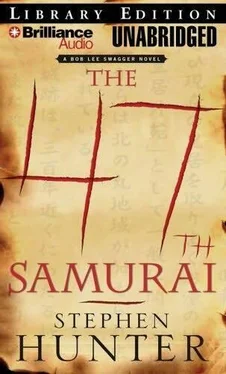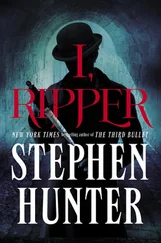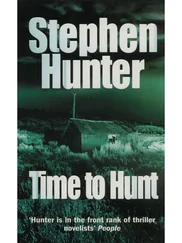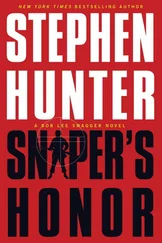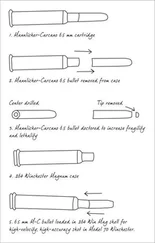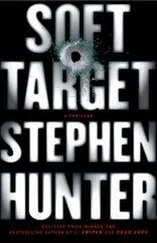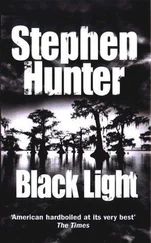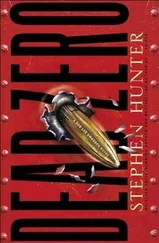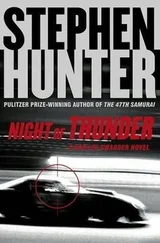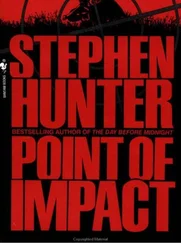What secrets do you hold? he wondered.
Should I invest six months and 15,000 yen per inch to have you polished? And suppose that reveals…nothing. Suppose you’re a tired old hag of a blade, polished so many times that now you’re brittle and will shatter at the merest breath. You yearn for oblivion, and another polish-the tenth, the fiftieth, the five hundredth?-would just take away more of you, make you weaker and yet more nondescript.
I would waste my money, my time, and my spirit on you.
He tried to accept what lay before him: an unremarkable ancestral blade created sometime in a forgotten past by a smith of no particular talent. You were all right. You served: a war here, an execution there, maybe a duel, an ambush, a plot, maybe politics and ambition and strategic planning, an Edo or Kyoto ceremony or two, and finally, hundreds of years after your birth in fire and clay, you were clapped in military furniture and went off to war and ended up briefly in the possession of a forgotten officer named Hideki Yano, who died on Sulfur Island in service to-well, to what? His forgotten ancestors. Of what significance could that be? Almost none: it’s the story of a million other blades and a million other men.
You have your father’s blade. It’s enough.
And yet…and yet…
It’s so old. It’s koto at least, made sometime in the 1500s. It’s unusually, even mythologically, sharp. Even now, centuries later, when Swagger-san and I throw paper against it, it cuts deep, fast, and straight.
He thought of a story:
A disciple of Japan’s greatest swordsmith, Masamune, believes he has finally made a better blade than his teacher. Being vain and ambitious, he demands a competition.
The old man resists but ultimately relents.
The young man’s blade is placed in a stream. Things drift down: it cuts…everything, twigs and leaves and fish. It cuts garbage and paper and bubbles. Everything that floats it sunders.
Then the old man’s blade is placed in the water.
It cuts…nothing.
Whatever floats to it is magically diverted.
After a time, the young man exults.
I have won! My blade is better! My blade cuts everything, his nothing!
Old Masamune pulls his blade from the water with a smile.
Admit it, Master, says the young man. Mine is better. It cuts everything.
Old Masamune walks away, satisfied.
The young man sees a priest, who has watched the action.
Priest, tell him how much better my blade is. Make him see.
No, says the priest. His blade knew the way. It saw nothing that had to be cut. It brought no harm into the world. It has come to help the world; it is a blade of justice. Your blade, on the other hand, cut everything without discrimination. It is an evil blade. It has no morality. It should be destroyed.
Yano looked at the dull thing. He had a premonition, like a chill, as if an oni, a demon, had passed through him. It is an evil thing, he thought.
The young swordsmith’s name was Muramasa, and his blades acquired a reputation; there was something evil about them, they yearned for blood, whoever wielded them became a great killer but died by the blade as well. The blades had a particular hunger for the shogunate’s blood; over the centuries Muramasa blades accounted for several deaths in the Tokugawa family and were finally banned. Those that could be found were gathered up and destroyed; only a few remained. Could this be a Muramasa blade?
He had never seen a blade cut so straight, so clean, so quick.
The American didn’t understand it, the child Tomoe didn’t understand it. But he did.
It cut like a legend. It cut everything. It wasn’t Masamune’s blade, it was the young man’s.
He looked now at the tang.
The kanji lettering, each unit a visual poem in itself, climbed the shaft of the metal, blurred by age, subtlety lost in rust, its history written in the holes-three of them-that were drilled each time the blade acquired a new owner-warrior, until finally some dreary mechanic in the Naval Edge Company in Tokyo in 1941 or so clamped it in a set of fixtures, lowered the grinder, and punched a final hole through it, before burying its secrets in the cheap metallic furniture of the shin-gunto-issue 1939 trappings. If it had ever been sublime, it was now banal.
He examined the inscripted lettering and for hours looked in the volumes he had on hand.
There was Zusetsu Toso Kinko Meishuroku, of the limited edition of 1,200. There was Sasano Masa’s Tosogu No Kanshu, Kajima’s Tsuba No Bi, and Ikeda Suematsu’s Kano Natsuo Meihin Shu, not that this smith was a gendaito like Natsuo, but possibly Natsuo had gotten an idea from him, and Yano might have recognized it in the steel. Kanzan Shinto was also there, for the same reason, as Nagayama’s The Connoisseur’s Book of Japanese Swords.
At the university, he would have access to Koson Oshigata, Umetada Meikan, and the first half of Shinto Meijiro, and possibly there was something there. However, almost entirely lacking would be references to the run-of-the-mill koto smiths whose swords form the bulk of most collections, and possibly the answer lay there.
There was one possibility: a book called Koto Bengi, which included a lot of lesser smiths, with surprisingly accurate reproductions and details of chisel strokes that enabled checking for forgeries. The years from 1345 until 1590 were represented; rubbings that had been taken from almost-new, unrusted tangs yielded clear reproductions.
But who had it? That would take some digging. It had never been reproduced, but if any book held the key, it would be that one.
Then a thought occurred to him.
He went to his computer terminal, swiftly logged on. He checked e-mail and saw nothing, not that there was ever anything, and he went to Google in English. He typed in “Koto Bengi” and the system searched the computer universe and churned out ten possibilities.
Hmmm, one was an online encyclopedia, another few conventional sword-for-sale sites where blades were traded to wealthy Americans at only a 700 percent markup; a few others were indexes or rings that connected to still other sword sites; and a few led to shops offering books or sword memorabilia or small sword accessories like meuki, the metal inlays for the grip, or seppa, spacers, or kozuka, the small sub-sword blades that were sometimes inserted into the saya.
An hour into his search he came upon a small store in Tulsa, Oklahoma (!), calling itself the Samurai Shop. He looked briefly at the overpriced but clearly genuine swords (many were papered, meaning they’d been examined and certified by the Japan Sword Association), then finally clicked on “Books” and called up a list of volumes. Halfway down the list he found it: Koto Bengi, 1823 edition, very rare, good condition, spine weak, spots on cover, $1,750.
For $1,750!
Certainly there was a Koto Bengi in Japan that could be examined; a library would have one in its collection, or a shrine.
Samurai had become international and you were just as likely to find rare artifacts in the American Midwest or the Scottish highlands or the Italian peninsula as anywhere in Japan. The collectors were like swarming insects: they came, they bought crazily, they resold, and many of them learned. That was the oddest thing: many of the most knowledgeable men in the world on blades were not Japanese at all. Here, a sword scholar in Japan in 1823 had examined blades of the late 1400s through the year 1600, had meticulously redrawn or taken rubbings of nakago for a volume that survived a tumultuous 184 years of war, strife, revolution, and extreme violence and had ended up in a store in Tulsa, Oklahoma, where a clever merchandiser displayed it on something called the Internet. Now it flashed back across time and centuries to a retired soldier in the suburbs of Tokyo!
Читать дальше
